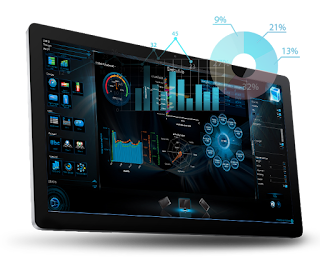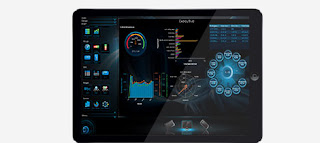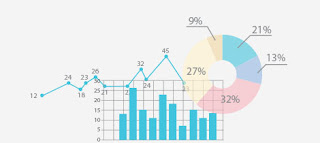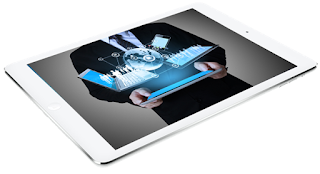Big Data and
Restaurants:
Something to
Chew On
Big data. It’s what Amazon uses to track millions of products and customers to deliver personalized buying suggestions whenever anyone visits its website. Or how Netflix recommends movies to keep its customers coming back. Maybe you’ve heard the term, but you don’t see how bigdata could possibly apply to your restaurant. It seems so big and so complex. Actually, big data isn’t that big anymore, thanks to tremendous gains in computing power, storage space, access to the cloud, and new software designed to help restaurants of all sizes unlock the secrets of their data and put useful information at their fingertips. The data from your POS, marketing, accounting, inventoryand scheduling systems is a vein of gold just waiting to be mined. Now your establishment can benefit from the same predictive analytics and business insights previously reserved for the likes of Amazon or Google. This guide will help you understand what big data is and how you can collect, measure and use it to make improvements to your operation and your customers’ dining experience. Big data can help you reduce costs and maximize your marketing ROI. It can lead to new customer insights, enhance guest service, build loyalty and increase profits.
What are you waiting for? Big data isn’t just for tech giants like Google and Amazon. Restaurants can take advantage of sophisticated analytical tools that just a few years ago were out of reach for all but the largest companies. With increased competition and growing demand for personalized service, you owe it to yourself and your operation to explore your big data options. At the very least, you’ll discover a wealth of information to explore and draw insights from
Big data. It’s what Amazon uses to track millions of products and customers to deliver personalized buying suggestions whenever anyone visits its website. Or how Netflix recommends movies to keep its customers coming back. Maybe you’ve heard the term, but you don’t see how bigdata could possibly apply to your restaurant. It seems so big and so complex. Actually, big data isn’t that big anymore, thanks to tremendous gains in computing power, storage space, access to the cloud, and new software designed to help restaurants of all sizes unlock the secrets of their data and put useful information at their fingertips. The data from your POS, marketing, accounting, inventoryand scheduling systems is a vein of gold just waiting to be mined. Now your establishment can benefit from the same predictive analytics and business insights previously reserved for the likes of Amazon or Google. This guide will help you understand what big data is and how you can collect, measure and use it to make improvements to your operation and your customers’ dining experience. Big data can help you reduce costs and maximize your marketing ROI. It can lead to new customer insights, enhance guest service, build loyalty and increase profits.
What are you waiting for? Big data isn’t just for tech giants like Google and Amazon. Restaurants can take advantage of sophisticated analytical tools that just a few years ago were out of reach for all but the largest companies. With increased competition and growing demand for personalized service, you owe it to yourself and your operation to explore your big data options. At the very least, you’ll discover a wealth of information to explore and draw insights from






